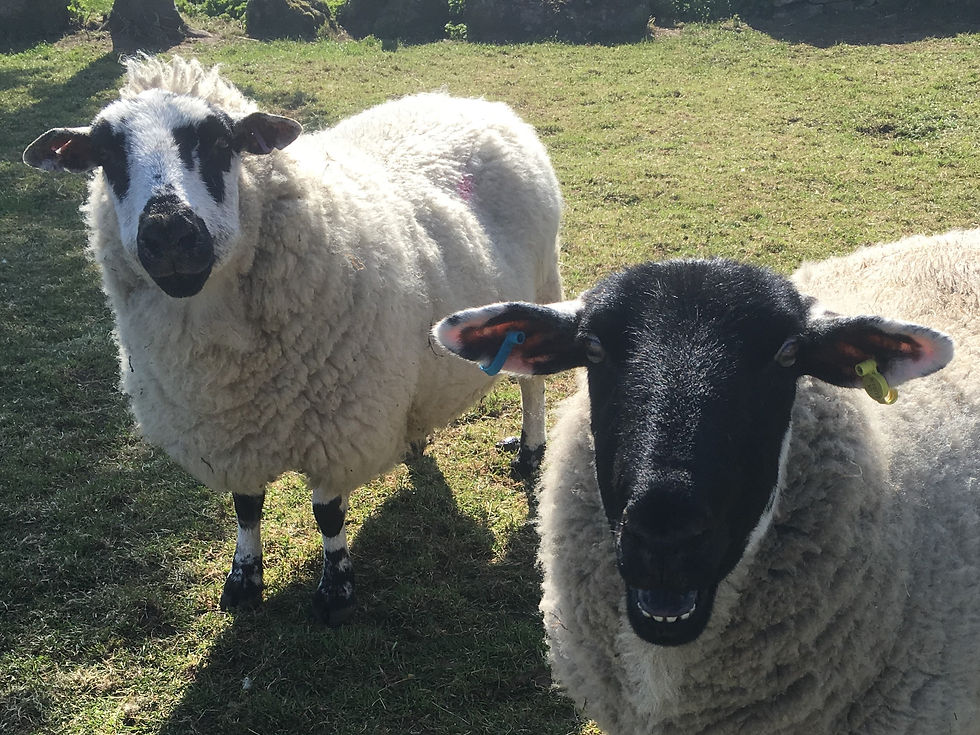About Brassington
- Andy
- Jul 2, 2019
- 3 min read
All about the small Peak District village of Brassington, home to us and our sheep.

‘You’re either coming here or you’re lost,’ says one local about Brassington, a picturesque former lead mining village midway between Ashbourne and Matlock in Derbyshire’s southern Peak District.
Up until the mid-18th century however Brassington was precisely on the beaten track, on the western side of a steep incline on a narrow valley, the last toll station on the important Shardlow Turnpike.
This section of the original London - Manchester road ran from where it crossed the Trent at Shardlow, south east of Derby.
(Above the village is a dry limestone plateau which was not a tolled road as it didn’t need the upkeep.)
Then 1738 saw the opening of the now-A6 along the much flatter Derwent Valley between Derby and Matlock (and ultimately Manchester).
It meant a - temporary - setback for Brassington, especially as it coincided with the peak of both the wool industry and lead mining, mainstays of the village economy since at least Roman times.

Well before this, however, the Brassington of today had already started to emerge, built mainly from local limestone and where, even today, most of the houses do not have numbers, just names (a nightmare for delivery drivers).
Aside from the church - built from 1150AD - the landmark building in Brassington is the 1615 ‘Tudor House’, centre left above.
This has had several iterations in its history - Red Lion Hotel; workhouse - and interestingly has just been put up for sale as a private house.
Happily, the opening of the first quarries and the High Peak Railway in the 19th century returned the village to a prosperity which it has enjoyed more or less ever since.

Modern Brassington prides itself on being a working village, home mainly to full-time residents.
It might have its chocolate box aspects, and stunning views from almost every house, but there is a distinct lack of tourist accommodation with just one B&B at the time of writing and only 25 permanent holiday cottages among its approximately 360 houses (which is already way too high a proportion for some).
There are no shops at all, just two pubs - The Miners Arms, a proper drinker's pub 'where you go for your tea', and Ye Olde Gate Inne (above right), a much-cited, 400 year old very traditional establishment, with a proper chef, polished brasses, working ranges in two rooms and a distinguished Georgian-paneled dining room 'where you go for dinner' (disclaimer: I work there).
The lifeblood of the village is the village school. The locals have and will fight to keep it open, on the basis that without this vital amenity for families, Brassington may struggle to avoid the fate of other places in the Peak District, that of a holiday cottage ghost village, with a dwindling permanent population of retirees plus commuters.
That aside - and my money is on Brassington keeping its school - there is a definite buzz about the village.
Within a few months of moving here we were desperate for a night off: Monday and Thursday evenings were for football league games; Tuesdays for polishing brasses at The Gate; then book club; sessions on the village magazine ‘Brasson Banter’ - Brassington is abbreviated to Brasson locally, hence our wool being Brasson Gritstone - and the village website.
That was before my other half was elected to the Parish Council and I was co-opted onto the Carnival committee.
Even then this is just a fraction of Brassington social clubs and societies which range from weekly ‘Tea & Toast’ at the Royal British Legion for OAPs, a photography club, PTA, allotments, Brownies and Guides, netball, Neighbourhood Watch, the Environment Committee plus everything that happens in and around the Church.
Oh and regular evenings helping support the local pubs !




Comments